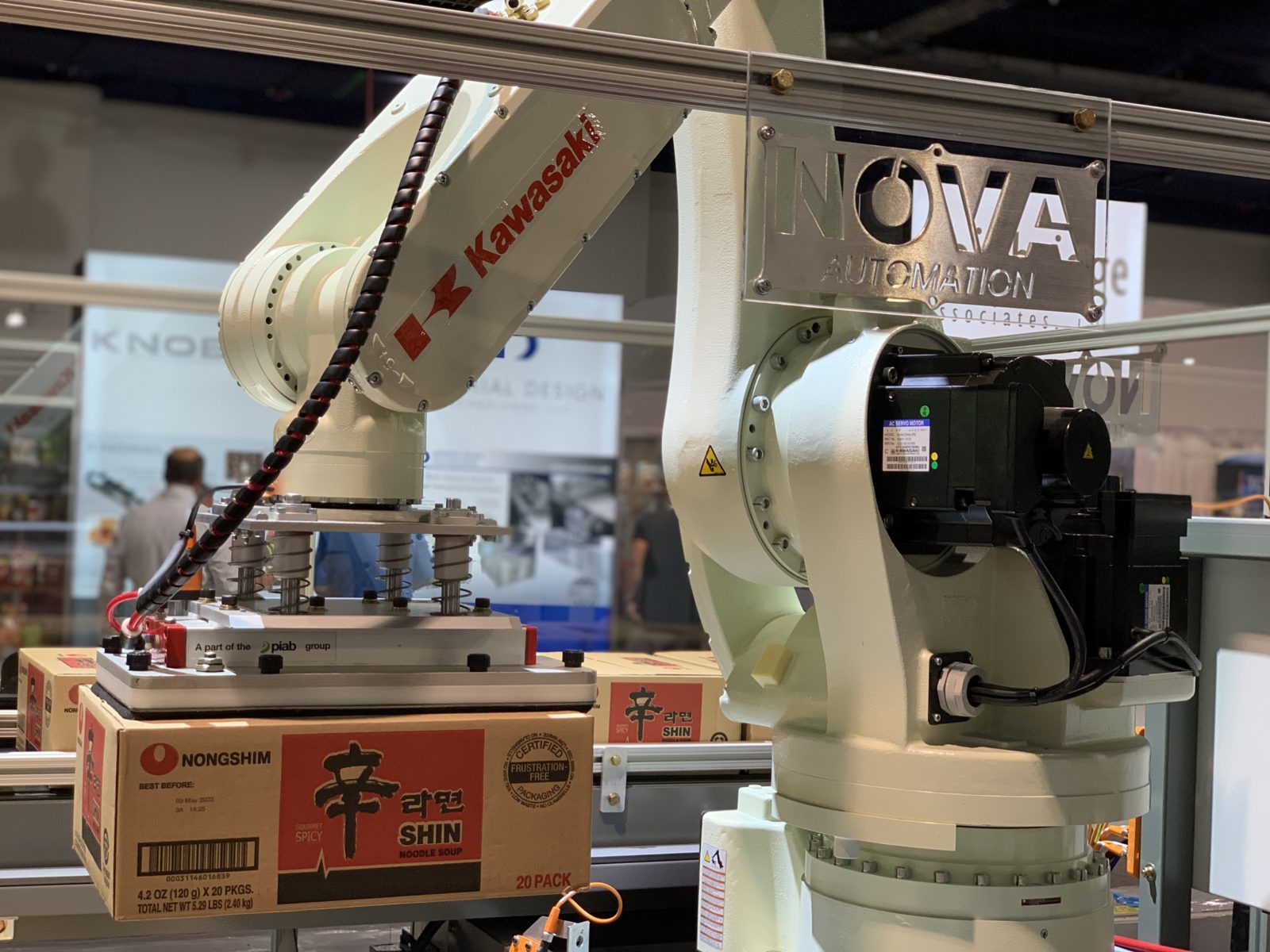
Palletizing is among the most important requirements for manufacturing, warehousing, and logistics companies. You can’t stretch wrap and ship your products if you don’t stack them first.
Companies without automated palletizing systems typically struggle to find people willing to stack boxes – especially the heavy cases – day after day. The repetitive process of manually palletizing leads to labor issues, downtime, and injury.
The entry point for palletizing has never been lower. There are resources to help even the most cash-strapped companies looking to automate because they can’t find people to palletize at the end of their packaging lines.
Robotic or conventional palletizing focuses on safety, reliability, efficiency, and return on investment.
These systems love repetitive work – they’d love to palletize 24/7.
Let Someone Else do the Heavy Lifting
One of the most significant advantages of using robotic palletizing is increased safety. Manual palletizing involves repetitive motion, heavy lifting, and awkward postures, which can lead to musculoskeletal disorders and injuries. Robots eliminate workers’ need to lift heavy loads, reducing the risk of back and shoulder injuries.
It also removes the need for workers to stand in awkward positions, which can lead to strains and sprains. By replacing manual labor with a robotic palletizer, companies can create a safer work environment for their employees and reduce the number of workplace injuries.
Reliability
Robotic palletizing also offers increased reliability compared to manual palletizing. Robots are designed to work continuously without needing breaks or rest periods. This means they can work 24/7, increasing productivity and reducing palletization time.
They also have a higher level of accuracy than human workers, reducing the number of errors and increasing the consistency of the palletizing process. This reliability ensures that companies meet their production targets, improve output, and maintain consistent product quality.
Efficiency
Robotic palletizing is more efficient than manual palletizing in several ways. Firstly, robots can operate at a higher speed than human workers, allowing them to complete the palletizing process in a shorter amount of time. Secondly, robots can handle a wider range of products than human workers. This is because they are not limited by physical strength or size, and can adjust to different shapes and sizes of products. Finally, robots can work on multiple pallets simultaneously, reducing the time required for palletizing and increasing overall efficiency.
Return on Investment
Robotic palletizing can provide a significant return on investment for companies that adopt the technology. While the initial cost of purchasing and installing robotic palletizing equipment can be high, the long-term benefits can outweigh the costs. Firstly, the increased safety of robotic palletizing reduces the risk of workplace injuries, reducing costs associated with workers’ compensation claims and lost productivity. Secondly, the increased reliability of robotic palletizing leads to improved production output and quality, resulting in higher profits. Finally, the increased efficiency of robotic palletizing can reduce labor costs, as fewer workers are needed to complete the palletizing process.
In addition to these benefits, robotic palletizing offers other advantages worth considering. For example, robots can work in various environments, including cold rooms, clean rooms, and hazardous areas. They can also be programmed to perform a variety of palletizing patterns, including straight stacking, interlocking, and spiral patterns, giving companies greater flexibility in their palletizing processes.
Despite these advantages, companies should be aware of some challenges associated with robotic palletizing. Firstly, robots require regular maintenance and programming to operate efficiently and effectively. This can be costly and time-consuming, but the benefits of increased safety, reliability, and efficiency generally outweigh the costs. Secondly, companies must ensure that their staff is adequately trained to operate and work alongside robots safely. This may require additional training and resources, but ensuring that workers are not at risk is crucial.
The benefits of using robotic palletizing over manual palletizing are clear. Robotic palletizing offers increased safety, reliability, efficiency, and return on investment for manufacturing, warehousing, and logistics companies. As technology advances, robotic palletizing is becoming increasingly accessible and affordable for companies of all sizes. It is certainly an investment companies should consider to improve their operations, reduce workplace injuries, and increase profitability.
Let us know if you’re considering automation for the first time or are curious if a robotic palletizer is right for your application. We’d love to help.
